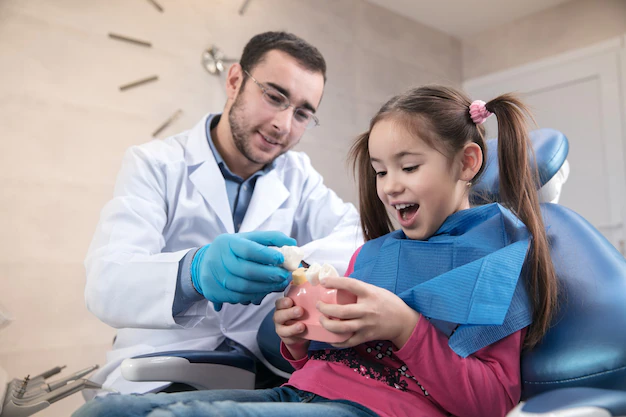As a parent, your child’s health and well-being are always at the forefront of your mind. When it comes to their oral health, an underbite can be cause for concern. But how do you know when it’s time to seek professional help? And what can you expect from treatment? In this blog post, we’ll explore everything you need to know about underbites in children and provide practical advice on when to seek help and what types of treatments are available. So let’s dive in!
What is an Underbite?
An underbite is a misalignment of the teeth and jaw. The lower teeth protrude beyond the upper teeth, causing an appearance of a “bulldog” bite. Underbites can be caused by genetics, thumb sucking, or other habits that put pressure on the front teeth. Treatment for an underbite typically involves braces or other orthodontic devices to realign the teeth and jaw. Surgery may also be necessary in severe cases.
Symptoms of an Underbite in Children
While the most noticeable symptom of an underbite in children is the protrusion of their lower jaw, there are a few other telltale signs. If your child has an underbite, you may also notice that they:
- Have difficulty chewing or swallowing
- Speak with a lisp
- Breathe through their mouth instead of their nose
- Have trouble making certain sounds when speaking
- Experience pain in their jaw or teeth
If you notice any of these symptoms in your child, it’s important to seek out professional help. A dental specialist can assess your child’s underbite and recommend the best course of treatment.
When to Seek Help for Your Child’s Underbite
It can be difficult to know when to seek help for your child’s underbite. Some parents may feel like their child’s underbite is not a big deal, while others may be concerned about the way their child’s teeth look. If you are unsure whether or not your child’s underbite is something that needs to be addressed, it is always best to consult with your child’s dentist.
There are several reasons why you may want to seek help for your child’s underbite. If your child is having difficulty chewing or speaking, this can be a sign that their underbite is causing problems. Additionally, if you are concerned about the way your child’s teeth look, treatment may be recommended in order to improve their appearance.
If you do decide to seek treatment for your child’s underbite, there are several options available. The most common type of treatment is braces, which can gradually move the teeth into proper position over time. In some cases, surgery may be necessary to correct the problem.
If you are considering seeking help for your child’s underbite, it is important to consult with an experienced dental professional who can assess the severity of the problem and recommend the best course of treatment.
Treatment Options for an Underbite in Children
There are a few different ways that an underbite can be treated in children, depending on the severity of the problem. For minor cases, your child’s dentist may recommend wearing a dental appliance called a retainer to help align their teeth. If your child’s underbite is more severe, they may need to undergo surgery to correct it.
The most common type of surgery for an underbite is called maxillomandibular advancement, or MMA. This procedure involves moving both the upper and lower jaws forward to realign them. It is usually done in two separate surgeries, one to move the upper jaw and one to move the lower jaw.
After surgery, your child will need to wear braces for several months to years to ensure their teeth stay in their new alignment. With treatment, most children with an underbite can achieve a healthy, functional bite.
What to Expect During the Treatment Process
If your child has an underbite, you may be wondering when to seek help and what to expect from treatment. An underbite is a type of malocclusion, or misalignment of the teeth. It occurs when the lower jaw protrudes past the upper jaw, causing the lower teeth to sit in front of the upper teeth. Underbites can be hereditary or acquired through thumb sucking or other habits. They can also be caused by a birth defect or injury.
Most children with an underbite do not require treatment. The condition usually corrects itself as the child grows and the jaws develop. If your child’s underbite does not improve on its own, however, you may want to consult with an orthodontist about treatment options. Treatment for an underbite often includes braces or other dental appliances to realign the jaws and teeth. In some cases, surgery may be necessary to correct the problem.
If you are concerned about your child’s underbite, talk to your pediatrician or make an appointment with our Jacksonville dentist.
Conclusion
A child’s underbite can be an issue that needs to be addressed early on in order to prevent long-term damage. If you think your child may have an underbite, it is best to seek help from a qualified dental professional as soon as possible. With the right treatment plan and care, it is possible for your child’s smile to be restored and their overall oral health improved significantly. Don’t hesitate; reach out for help today!

